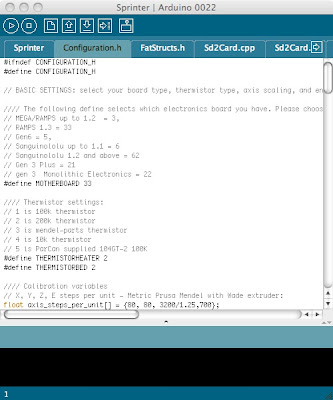I’m still in ‘waiting mode’ at the moment, so in preparation for eventual printing. To help get everything ready, I thought I’d update the software. It’s only a month old, but a month is a long time in Reprap, particularly with the software.
I went and downloaded the newest version of Pronterface. It doesn’t seem to be much different from the old version, but will undoubtedly have some improvements.
I’d also heard about the fork of Skeinforge, called Sfact. It doesn’t seem to be covered in a lot of the reprap documentation, but it was definitely worthwhile finding. It’s a simplified version of Skeinforge, with a lot of the unused options removed. It’s even got a simple configuration page, where the most common options are set. It definitely makes life a lot easier for a newbie like myself.
I also went and downloaded the lasted version of Sprinter. I went through and put in the correct configuration settings, ready to go.
That’s one more thing out of the way.
